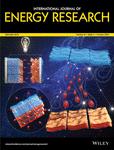Boost performance of porous electrode for microfluidic fuel cells: electrochemical modification or structure optimization?
Funding information: China Postdoctoral Science Foundation, Grant/Award Numbers: 2020M673395, 2018M632416; National Natural Science Foundation of China, Grant/Award Numbers: 51806241, 51905236; Natural Science Foundation of Hubei Province, Grant/Award Number: 2020CFB405; Research and Innovation Initiatives of WHPU, Grant/Award Number: 2020J05; the Natural Science Research Project of Higher Education Institutions in Jiangsu Province, Grant/Award Number: 20KJA480005; the Qianglan Engineering Project of Jiangsu Universites
Summary
The development of high-performance porous electrode is highly desired in microfluidic fuel cells (MFCs) to improve their output for real-world applications. Previous studies have mainly focused on the electrochemical modification of the porous electrodes to enhance their reaction kinetics. Yet, less attention was paid on the optimization of the electrode porous structure for improved mass transport. To identify proper optimization strategies, a computational model of flow-through type MFC with porous electrodes is established in this work and systematic numerical analyses are conducted to compare the effects of the kinetic and structural parameters of the anode and cathode on the cell performance. Simulation results show that the constraint from the anode is more severe and concentration polarization brought by the insufficient mass transfer in the porous electrodes dominates the cell performance. Thus, structure optimization of the porous electrode for enhanced mass transfer is more promising in the performance enhancement of MFCs in comparison with the electrochemical modification. The specific surface area of the anode is identified as the most influencing factor. After proper structure optimization, an increase of 62.2% can be obtained in the current density at 0.8 V, which is three times of that in the electrochemical modification case. Based on the results, useful guidance is provided for the future development of MFCs.
Novelty Statement
A computational model of MFC with flow-through porous electrodes is established. Simulation results show that structure optimization of the porous electrode for enhanced mass transfer is more promising in the performance enhancement of MFCs in comparison with the electrochemical modification. After proper structure optimization, an increase of 62.2% can be obtained in the current density at 0.8 V.




